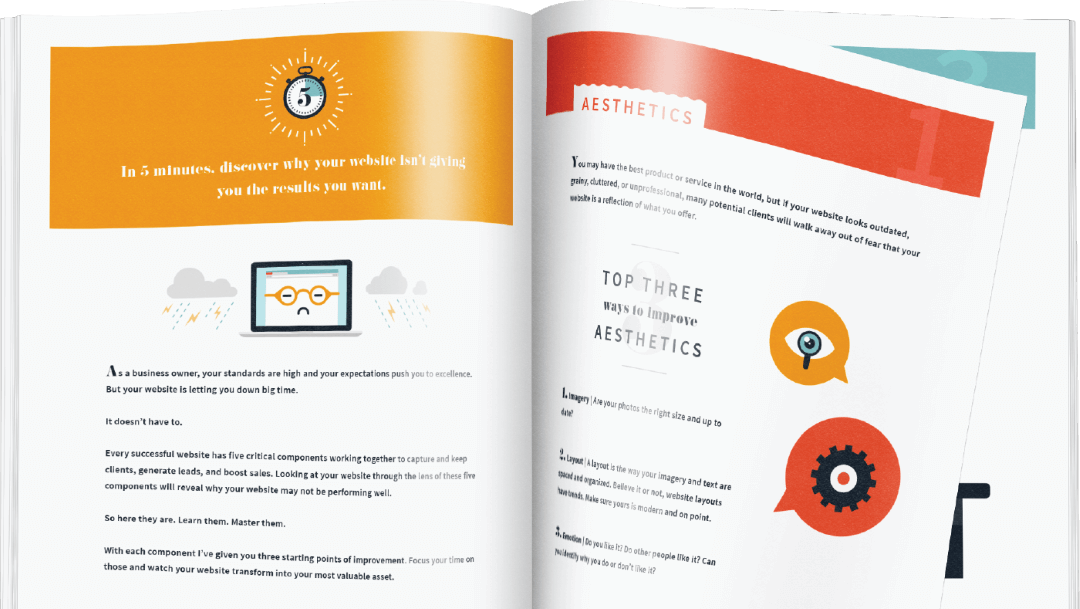Let’s talk traffic.? One of the most challenging things that business owners face with their online presence is getting new customers to their website. Before you go and hire a magic genie ?♂️ to make this happen, let me give you some of the behind the scenes on the different kinds of web traffic and what they mean for your business.
There are three types of website traffic – organic, paid, and direct. To break it down:
Organic
These customers find you when they search for your product, service, business name, or anything related to your web content. Perhaps they typed in “bike repair” in Google (or their search engine of choice) and your web address showed up at the top of the search results. And then let’s say that you had a compelling enough description for them to click on you, which sent them to your website. This would be considered organic traffic.
While organic traffic may occasionally happen without any effort on your part, most often, it’s necessary for you to do some SEO work to set you above your competitors in the search engine results. We’ll come back to this in a minute.
Paid
Also called inorganic traffic, this is when you employ a marketing strategy through Facebook or Google Ads, and you pay to promote your business. For a price per impression, view, or click, Google or Facebook put your ads in front of your desired audience and they do all they can to motivate your ideal customer to click on your website. With paid traffic, you’re doing your best to go out and find your customers, where organic traffic has your customers coming to you on their own.
Direct
Direct traffic is when your customer sits down at their computer (or phone) and types in your exact web address into their browser. They don’t come to your website through Google, Facebook, or anywhere else, but knew your address and got there directly. Direct traffic also counts if they get to your website through a saved bookmark ?.
So what?
I can hear you thinking, “Ok, great. But what does this mean for my website and my business?” Excellent question. Knowing your traffic sources can tell you a lot about the status of your website and how to improve, optimize, and serve your customer better. For example, if you discover that most of your traffic is organic, and the search engines are finding your services page most helpful and sending your customers there (instead of your homepage, like you thought), you can adjust your services page in order to get better results and conversions — sometimes that means writing more compelling copy that gives better specifics about your business. Sometimes that means adding a call to action to make it easier for that person to contact you.
Alternatively, if you identify that you don’t have any organic traffic (or very little of it), and most of your customers found you through a Facebook ad you did that one time. You can pinpoint what worked about that ad, and create a marketing strategy around that information. Additionally, you could spend some time on search engine optimization (SEO) and improve your status with the search engines to boost your organic traffic. For ideas on how to do that, check out our free Get SEO Fit guide.
Last, if all of your traffic is direct, it means you’re probably doing an excellent job networking, making phone calls, and handing out business cards. But, it also means that with a little bit of internet strategizing, you could have the world wide web doing some of that legwork for you. ?
What traffic type is best?
Now, the ever burning ? question — Is one source of traffic better than the other? And the answer is, yes and no. For the yes, it really depends on your industry. For the service industry, many people find what they need through searches — someone with a plumbing emergency is going to search “plumbers” instead of clicking on the Facebook ad they saw last week. So, if you’re a plumber ?? and only have time to focus on one kind of traffic, SEO and organic traffic might be your thing.
However, for the “no” part of the answer, both sources of traffic are ideal for a healthy online presence, and often go hand in hand ?. If you’re working on improving your SEO, it also means that you’re providing super helpful resources for your customer that could easily be implemented into a paid traffic strategy. The bottom line is, you have to figure out what you have time and money for, and where your business needs to go. Then you can focus on what you are able to within that framework.
So, how do I know where my website traffic is coming from?
Google Analytics is, hands down, the best way to track your traffic. And it’s free and easy to use. Simply visit https://www.google.com/analytics, sign in and add the tracking ID to your website. Once Google Analytics starts tracking, they provide clear, helpful visuals to show you exactly what’s going on with your website traffic.
While your online traffic may seem to be a mystery, with a little bit of research, strategizing, and Google Analytics, you can absolutely unravel your online customer base.
If this is all a bit overwhelming, and you’d like help creating a traffic strategy for your website, feel free to schedule a meeting with me—I’d love to help!

